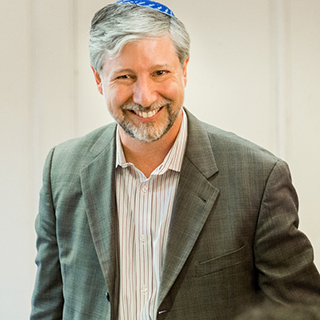What’s in a Name?

What’s in a name? Quite a lot, but you need to know the story. My family name, Nevins, is now five generations old, chosen by my paternal great-grandfather Haskell Neviadomsky at the time of his naturalization. He came to this country in 1896, fleeing the czar’s draft, and apparently decided that he would never make it in America with such a long and foreign-sounding name. I imagine him visiting Brooklyn’s Nevins Street, and deciding on the spot to become Hyman Nevins.
Changes of name, whether within a generation or between generations, signal the conflicted agendas of continuity and change experienced by all families, and particularly by immigrants. They attempt to remember the old country while fitting into the new. They make gestures of self-invention that affect not only their own lives, but also those of their descendants. The ancestor’s original rationale may soon be forgotten, but the reverberations of their decision continue through the generations.
This week we read in Parashat Lekh Lekha about two name changes, as Abram and Sarai become Abraham and Sarah. They have already experienced many upheavals, travels, and travails, and they have achieved old age when God suddenly announces in Genesis chapter 17 the establishment of a covenant (brit) that will make Abram into an ancestor for many peoples, secure the land of Canaan for his descendants, and be symbolized by the covenant of flesh, brit milah, in him and his sons.
But first, the names must change: Abram and Sarai each gain the letter heh, and she loses the letter yod. For millennia, our sages have parsed the meaning of these new names and their significance for the changing fortunes of our first family. Rabbi Shlomo Efraim Luntshitz, known as the K’li Y’kar, offers several explanations in his commentary, to which I will add some of my own twists.
There is a numerical conservation at work in these name changes, since the lost yod subtracts 10 from the sum, but is replaced by two letters heh, worth five points each according to the system of gematria. On the symbolic level, heh is a letter that recalls the Creation, based on the famous Midrash that God created the heaven and earth with the letter heh (b’heh bara’am). In Abram and Sarai’s name changes, one letter of the divine name YHVH is replaced by two others, perhaps signifying an intensification of their devotion to God. On a kabbalistic level, the two new letters heh of Abraham and Sarah may point to the second and fourth letters of the Name, which are in turn associated with the upper and lower mothers in the sefirotic system of binah and malkhut. All of these layers of meaning imply that our first family will together draw the divine presence into the world. Indeed, the prediction that Abraham will become a father to many nations has been realized through the Abrahamic faiths of Judaism, Christianity, and Islam.
Rabbi Luntshitz notes that the letter heh is associated with femininity and fertility; perhaps Sarai has to gain in feminine qualities in order to give birth to a child and heir. Yod is associated with masculinity; Sarai needs to diminish that quality by losing her yod. Abram too will become symbolically emasculated through the rite of circumcision (the yod is associated with the foreskin) in order to be renamed Abraham. In fact, both Abram and Sarai have until this point been pretty tough characters, constantly moving, getting into conflicts with many regional authorities, and even driving out vulnerable members of their own household. Perhaps a change of character is indicated by these name changes, as they become kinder, gentler leaders, accentuating their feminine qualities and finally succeeding in becoming parents.
In Midrash Bereishit Rabbah 46:8, the Sage Bar Kappara states that anyone who continues to call Abraham by his original name of Abram violates a negative command and fails to fulfill a positive one. The Torah is emphatic about these changes, whereas it continues to refer to Jacob and Israel alternatively. The old characters of Abram and Sarai have been set aside for good. Only the more complete, and frankly kind, figures of Abraham and Sarah will be identified as the spiritual and biological ancestors of Israel.
The transformation of Abram and Sarai into Abraham and Sarah has reverberated throughout our history. When trying to define the Jewish character, the Rabbis said (BT Yevamot 79a) that this nation is merciful (rahmanim), modest (bayshanim), and kind (gomlei hasadim). These qualities, especially the final one, are associated with Abraham and Sarah, who will demonstrate hospitality and compassion in the next chapters. We certainly cannot claim that the Jewish People has consistently lived up to these standards, but these remain our ideals.
New studies indicate that many Jews are becoming less and less certain of what being Jewish means to them. As a rabbi, I advocate that Torah study and mitzvah practice become integrated into every Jew’s life. But first a person must decide that she or he wants to be part of this story. One needs to add a letter heh to one’s name, adding a spiritual side to one’s narrative of self-invention, and becoming a follower of Abraham and Sarah. Compassionate practice should be the lead quality, which is followed then by reflection and devotion.
What’s in a name? History. What’s in a name change? Aspiration, self-invention, and transformation. The crown of a good name is said to be greater than the crowns worn by a king, high priest, or the Torah itself. What kind of name shall we make for ourselves?
The publication and distribution of the JTS Commentary are made possible by a generous grant from Rita Dee and Harold (z”l) Hassenfeld.



